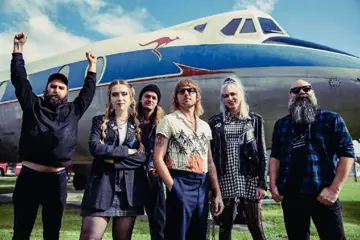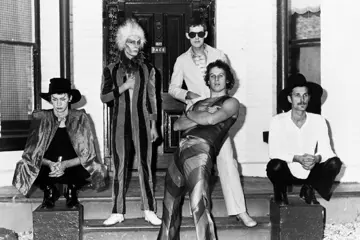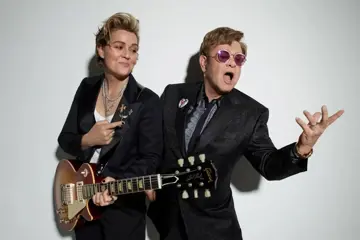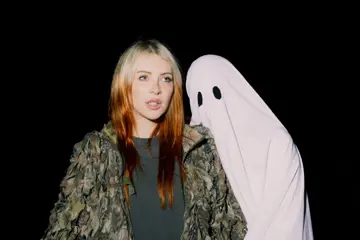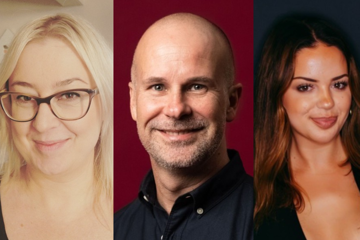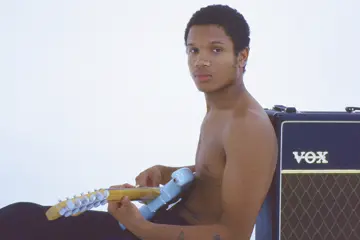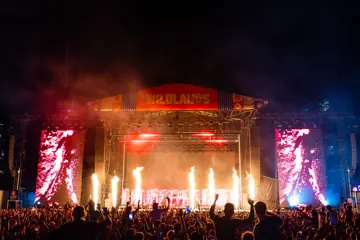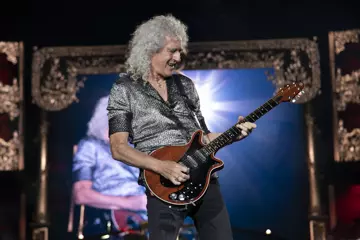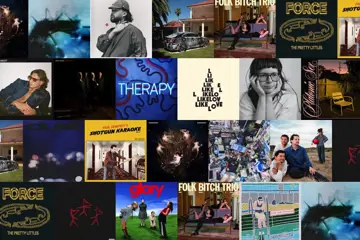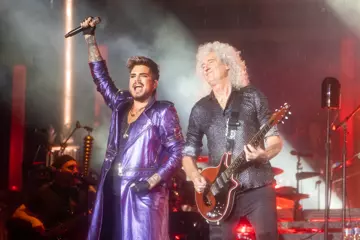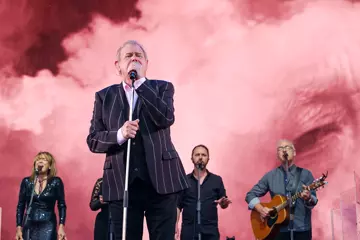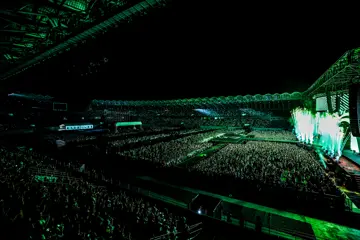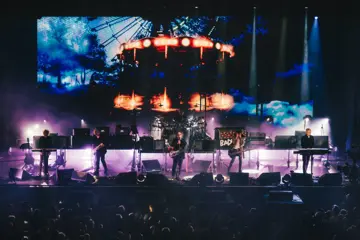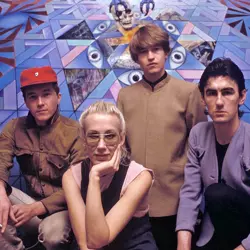 The Go-Betweens
The Go-BetweensIn late-1987 Brisbane expats The Go-Betweens returned to Australia after five years based in London, having uprooted their lives entirely in an attempt to crack the tough code that is the music industry. This time they set up home in Sydney - embracing the Aussie summer and the cheaper cost of living after years of relative bleakness and poverty - and bunkered down to work on what would become 16 Lovers Lane, their sixth and final album of their storied first tenure as a band.
With the songwriting partnership of Robert Forster and Grant McLennan working in tandem and pushing each other to greater and greater heights, the scene was soon set for the band to create what many perceive to be their creative zenith, the high watermark of a career laden with immense artistic achievement.
On the eve of the Sydney Festival's homage to this landmark Australian album, which finds all members of the band at the time bar Forster, who gives his blessing, and McLennan (who tragically passed away in 2006) joining up with a swathe of guest musicians and vocalists - namely Steve Kilbey (The Church), Peter Milton Walsh (The Apartments), Jodi Phillis and Trish Young (The Clouds), Izzi Manfredi (The Preatures), Shogun (Royal Headache), Dave Mason (The Reels), Rob Snarski (The Blackeyed Susans), Romy Vager (RVG) and Kirin J Callinan - to bring the timeless collection to life.
The Music caught up with some of the key players involved in the original seminal recording to revisit their memories of this incredibly productive project.
the band
It's always an array of intangible factors which make an album special in the long run, but multi-instrumentalist Amanda Brown recalls realising that the band's two frontmen and songwriters - Forster and his good friend McLennan - were both at the top of their respective games when bringing the band their contributions for 16 Lovers Lane.
Don't miss a beat with our FREE daily newsletter
"I remember it quite well," reflects Brown of the sessions. "16 Lovers Lane was recorded at the old 301 Studios in Sydney which used to be located in Castlereagh Street, it was like an old office block in the city. But it was quite a famous studio in the '80s and visiting artists such as Duran Duran would come in and record there while they were on tour in Australia, so it was quite a luxurious studio by The Go-Betweens standards.
"The producer was an English fellow called Mark Wallis, who had previously worked as Steve Lillywhite's engineer, who was quite a famous producer in the '80s working with people like The Smiths. So he was a very accomplished engineer and producer and he really knew how to get great sounds out of the studio, and he very wisely chose to keep the acoustic focus on the arrangements of the songs, so we were spared that big bombastic '80s production that tended to dominate the era, and is actually very much in fashion again at the moment.
"But in the case of 16 Lovers Lane it meant that it lent the songs quite a classic, timeless sound that transcends their era and makes them relevant to any era. And also the subject matter, because the whole album is about the universal feeling of love."
Brown definitely remembers both Forster and McLennan bringing their A-game to proceedings.
"Without sounding like a total egomaniac I knew it was a very strong collection of songs," she laughs. "And because the nature of the set-up of the band was two songwriters, it meant that we had a very strict rule that they'd always have an equal number of songs on every album. So they were kind of continuously competing and intellectually sparring with each other, and I think that produced some great work.
"And it also meant that each songwriter only had five songs each on the album, so it was their five absolute best songs so the quality was there. And I think Lindy and I were quite harsh critics and weren't afraid to say if something was weak or had a bad lyric or needed work on the arranging.
"It was very collaborative, they'd bring in the bones of the songs and the band would arrange the songs. So when we had John Willsteed on board for that album, for example, he brought a lot of those very pretty, melodic nylon-string and acoustic guitar melodies: that's him playing the guitar solo on Streets Of Your Town, and also the bass on that song which is quite melodic because he's not actually a bass player and he played that bass part on a Stratocaster through an octave pedal. It gives it that really quite distinctive sound, which is a great sound but not your typical bass part."
Willsteed - who'd just joined the band prior to the album's creation - also has fond memories of the album's genesis.
"I got a lot of joy out of just sitting there with Robert just playing acoustic guitar beds for the songs and stuff like that - I love playing music and I love making music, so I got to do a fair bit of it on that record," he reflects. "And that's one of the things that actually drew me to the idea of doing it live, having the opportunity to kind of revisit some of those bits and pieces that were layered into the album.
"The album is quite dense in many ways, even though it has a lightness and a shimmery-ness about it, that is something that is deceptively made up of a lot of parts. A bit like how a spider's web is a delicate thing made of gossamer, but in fact there's a lot of complexity and intricateness in how it's constructed."
the producer
As far as Wallis was concerned, having recently finished work on Talking Heads' Naked and U2's The Joshua Tree - and having mixed a couple of tracks on The Go-Betweens' previous effort Tallulah (1986) - he was hooked on the project the second he heard Forster and McLennan's original acoustic demos.
"The minute I heard their demos I thought, 'This is how we have to make the album'," he recalls. "Obviously their management had sent me all of their previous albums when they sent me the demos, and I just thought, 'Well this is just Grant and Robert sitting there playing acoustics and it's awesome! If we can build from this - get the two of them to play together and perform each song in its raw state - it will be perfect'.
"Having worked with a lot of great songwriters what they'd all say - traditionally, back in the '70s - was 'I wrote this song, and the minute I got it in the studio with the band it changed', which is just the nature of things. If you've got four or five people in a band everybody will interpret your song differently, so many songwriters would say to me, 'I had this great song when I was sitting at home playing it over and over again on my guitar or piano and I just thought, 'Wow, can't wait to record this', and as soon as we got to the studio and everybody was playing along it all became different'.
"So having heard that set of demos I just thought, 'This has got to be the way we put the basics down, we just try and capture those two' because it was just so magical. It's probably where they started when they got together all those years ago, just the two of them sitting in a room playing and sitting together.
"So I thought, 'When I get out there to record I'd like to see if that was possible in some way, to find that energy without it becoming diluted' first of all, and then we can look at the simplicity of what to add on top so it didn't become overburdened with unnecessary bass guitar parts or unnecessary bits of waffle that just get buried. I wanted to try and keep it open.
"And having eventually got to Australia we went into rehearsals for a few weeks and everybody seemed really quite excited by that idea. We'd rehearsed it all up as a band and Lindy [Morrison - drums] was coming up with brilliant drum parts and John was coming up with good bass parts and Amanda with her strings and oboes and things and it was going really well, but everybody seemed keen to go like, 'Yeah, okay, let's use that as our basis. We'll record Grant and Robert together and then we'll put our stuff on top, and we can really look at what's necessary so we don't overlay it with loads of stuff that's unnecessary'.
"It was hard work rehearsing because we had to try out all the ideas - I'm perfectly happy for anybody to give everything a go. We'd look at what was what and I was just making copious notes of everything: all of Lindy's drum parts I would notate down what they were and try and write out Amanda's string and oboe parts, all of the ideas for people's contributions. Then when we were in the studio I would remind them of things, like, 'Remember when we were in rehearsal and you tried that?' and they'd go, 'Oh yeah, let's give that a go'. It was interesting.
"I guess one of the difficulties of the album that we had was that Lindy's father was unfortunately very, very ill at the time we were recording, so she had to keep zipping off to see her father in hospital, I guess. So we ended up with a couple of tracks where we just used her basic rhythms: I wrote her drum parts into a machine - they're all her drum parts because she's such a distinctive and brilliant drummer, I think she's really awesome. They're all her parts, but we had to use a machine on a couple of them because, to be brash, we couldn't hang about while her father was ill. So she would come in and overdub cymbals and things - because you can never really do cymbals electronically or high-hats: they might work nowadays but back then programming of electronic drums was a really basic art form. And we wanted to keep everything as organic as we could really, having set out recording it with Grant and Robert playing acoustics.
"It was quite a thing recording the backing tracks, because I'd sit them in the main studio like two feet apart facing each other - so they'd each sit on a chair looking towards each other with their acoustics - so they were looking each other in the eye, and I said, 'That way you can really cue each other for all your changes'. That seemed to be a real buzz for everybody, watching them out the backing tracks down was spine-tingling."
One of the album's main production strengths is the incredible acoustic guitar sounds which underpin most of the arrangements.
"I had a laugh last year when I read Robert's book Grant & I and there's a really funny quote about recording 16 Lovers Lane, something like, 'Mark Wallis can make acoustic guitars sound like they're mountains exploding'," the producer chuckles. "I just love the sound of acoustic guitars, it's has that 'really getting under your skin' type of quality. It's really hard to explain. When I was younger I used to be listening to Crosby, Stills, Nash & Young and those sort of things, and I'd be listening to the acoustic guitars and they'd be wrapping themselves around my head as I listened to them - I always loved that three-dimensional quality.
"So that was a multi-mic technique: on each of the guitars there were three mics to give it a kind of psycho-acoustic effect that really sucks in all the harmonics that an acoustic guitar develops. If you listen to somebody playing an acoustic guitar and you walk around that guitar you can hear different tones and qualities of sound from wherever you stand.
"If, for instance, you put your ear right where the tuning nuts are - where a good acoustic guitarist would tune their instrument - if you listen from there you can hear all sorts of high, zinging harmonics ringing out. So we had a mic there and we had a mic down near where the ends of the strings are - down on the body of the guitar - and again it's another kind of clanky sound down there which is very different. And then we had a traditional microphone picking up near the sound hole of the acoustic guitar, and the three of those mixed together in a broad stereo sense create a really surreal but appealing acoustic guitar sound. I'm sure it's not everybody's taste but we liked it."
The band clearly had an enormous amount of trust in Wallis, as evidenced by another section of Grant & I where Forster recalls the band being read out the album's eventual tracklist by the producer, who'd chosen from the batch of demos he'd received.
"Well that sounds very officious like I was some kind of Nazi leader, but it wasn't quite like that," Wallis chuckles. "We were all of us - all of the band and myself - we were all in a state of mind where we were all right in the zeitgeist at the time, we were all at the top of our game and determined that we were going to make something beautiful. And I just went in and said, 'Listen, this is what I think from what I've heard; I really feel this, this, this, this, this and this', and I don't remember there being any argument about it. We kind of discussed it, it wasn't like I demanded that we must do those songs, and they just went, 'Yeah man, that's fucking great!'"
In an attempt to generate the perfect take Wallis even had Forster record his vocal to heartbreaking album closer Dive For Your Memory on the roof of the studio itself.
"Being in studios is very hard for singers," he explains. "Most singers really enjoy standing in front of an audience to sing, because they've got people responding to the emotions in their singing. So for a lot of singers standing in a really empty room singing to nobody accept a bunch of people standing on the other side of a big glass window can be really uninspiring.
"So with a lot of singers I'll always let them be actors if you like, as if they're acting in a film. I did one song with a French band and the song was about a man who'd fallen on hard times - he'd had a good job but then fallen on really hard times - and ended up as an alcoholic and a destitute living on the streets. He really couldn't get the emotion of the song to come out, so what we did was out in the grounds of the studio - next door to the studio - was a public park and a footpath, so we got loads of old bits of cardboard and wood and built like a tiny little tent made from scraps of wood and twigs and cardboard boxes.
"I got him to get inside there and do his lead vocal in there as people were walking past, like he was a tramp on the street singing for his supper, and it worked absolutely brilliantly! And he got some money because people put some money into his tray while he was singing - that's the honest to God's truth - and he did it in two or three takes. He was suddenly part of his lyrics - he remembered what the lyrics were all about and here he was a tramp on the streets outside the studio and he got a great vocal take.
"So I've done lots of games like that with singers over the years, where if they're having a problem I'll say, 'Well, let's find a way of trying to action it'. You don't always have to work that way - you can work with someone like David Byrne and do a vocal in one take - everybody's different. Some people are great singers one day and then can have a real problem another day.
"So with Dive For Your Memory, I said to Robert, 'Why don't we go up on the roof? The acoustic from standing up there will be amazing'. That was at 301 in Sydney and I think it's about the fourteenth floor or something like that, and he went up there and did his vocals and it was awesome because he went rather close to the edge of the building at times, and I'd go, 'Robert! Come back, you don't need to sing right on the edge, mate!' But it worked.
"It was just a vibe, just a moment in the recording to try and make the vocal live. Try and make it an experience for the singer where he's really experiencing the emotions, because he's delivering to the whole of Sydney! He was singing from the top of the building to everybody in Sydney, and it was great. It does make a strange acoustic sound on the mic because there was no reflections: normally when you're singing into a microphone in a room the sound is reflecting off all the walls and the ceiling in the floor, but in that instance when you're in the open air there are no reflections."
Does Wallis think that geography plays a role in an album's final sound? For instance, does the fact that The Go-Betweens recorded 16 Lovers Lane amidst a Sydney summer impact the final product?
"I think it can do," he reflects. "I'm only the person who's capturing what they do, and the guys in the band were all living in Sydney and rocking and being part of the spirit of Sydney at that time. So yeah I think if we'd made that album in London it might have been a different album, and I think it really reflects that summer in Sydney.
"And it was a big time for them - for a band who were so talented they should have been bigger than U2 these guys, or bigger than R.E.M. - and they'd been so destitute in London, it was so hard for them, and they were always on the promise of being the next big thing and it's hard to live like that.
"Let's face it, all of the guys in the band are amazingly talented - I mean, what a drummer Lindy is. She is fucking awesome, and very underrated. People often don't give her due regard for her drumming across all of their albums, she's very inspirational and very different to a rock drummer - she's got a style that's all her own.
"And I thought being there in Sydney at that time after five years of being stuck in Europe, living off the breadline, it felt like suddenly it was a rebirth for them. And it was a shame that the emotions brought the band to an end after that, it must have been really hard for them to have made such a great album and be so proud of it and then for it really to not amount to a hill of beans, as they'd say in America."
Wallis - who would go on to helm The Go-Betweens' swansong Oceans Apart (2005), as well as Forster's first post-band solo effort The Evangelist (2008) - was shocked that 16 Lovers Lane never made more commercial impact than it ultimately did.
"Oh God yeah, I was devastated," he says sadly. "I was absolutely devastated. I thought it was the best piece of work I'd ever done, I thought it was the best piece of work they'd ever done, and I could see that the record companies were doing their bit trying to make it work but I don't know, it just didn't do it at the time. I don't know, I really don't know."
the guest singer
For guest vocalist Peter Milton Walsh of The Go-Between's Brisbane contemporaries The Apartments - who even briefly joined The Go-Betweens' ranks in the late-'70s - the tribute is all about paying respect to his friends and musical counterparts.
"I'm really happy to do it," he offers. "How it came about was that John Willsteed rang me and he said I'd just need to sing on one particular song - I'm not sure I'm at liberty to say what the song is, that's their call because it's their show - but he just rang and said, 'Would you sing this song?' and I said, 'Let me think about it and we'll take it from there'.
"I'd actually been talking to Robert a lot at this point, he was in England and then in Ireland and I actually spoke to him as he was crossing the River Liffey in Ireland - I took the opportunity to tell him that he was taking this James Joyce thing a bit too far - but he said that he thought that it was fantastic that I was doing it.
"We'd been very important to one another, and Robert and Grant were nice enough to ask me to join the band: it was about '78, and it was seriously about two or three weeks that I was actually in the band. But it was just like a wonderful set-up where I had The Apartments going and Robert and Grant would always turn up at The Apartments' shows and then Robert came to my place one night and said, 'Look, we just got a deal with Beserkley Records, it's an eight album contract and we're going to England, we're going to be playing all the time and doing some recording and we want you to join the band and come with us to play guitar', and that just sounded good to me. And Robert being a man of fashion, as well as a very strategic thinker, said, 'There's a ticket to England and you'll be on wages and we've got a label', and then he says to me, 'You know what this means, don't you?' and I said, 'Yeah, it sounds really good', and he says, 'No, we'll have our own hairdressers!'
"And even though we moved around a lot, and I moved to New York at the time when a lot of people I knew were moving overseas - at roughly the same time The Go-Betweens, The Triffids, myself and The Moodists all left Australia - but everyone that wanted to move their career on moved to London, because London was the career town. Whereas I wanted to go to New York because I had a thing about New York, so I moved to New York which was not a career town in music. People were saying to me, 'New York's moment has passed', but that's what people say about every place when you've just arrived: they'll tell you, 'You missed the golden age', and you'll say, 'When was the golden age?', 'Oh, it was yesterday, just before you arrived'. It's always like that.
"So we kept in touch and there were always still a lot of links between us. Like it was actually Grant when I was tossing up names for The Apartments, and I said to him, 'What about The Apartments?' and he said, 'That's just perfect for you - it's cynical, it's romantic, it's Billy Wilder, it's just perfect'. So I was just completely sold on the name because of him, and that's a significant thing - it only happens once in your life when you choose the name of your band.
"So they were a big part of my life, and I've collected lots of letters from Robert over the years and they were always very encouraging. Because I wasn't having the same sort of career that they were having, but they always believed in me and that was great. So they were significant to me in that way.
"And same with the others as well, with John and Amanda. I've been playing with Amanda since 1986, and I've never actually played with Lindy but John Willsteed played on [The Apartments' 1993 album] Drift, so we've been in and out of each other's lives. So, for me, it's a way of honouring who they are to me, because they're an extremely important entity to me, and paying respect as well. And certainly, of course, what hovers over everything is that Grant's not here, and in some ways this is also a way to honour him."
Does Walsh ever wonder what may have happened if that Beserkley deal hadn't fallen through and his brief stint in The Go-Betweens had been given the opportunity to take root?
"No, look it's hard for me to recognise now the guy I was at that time, but I was a lot of trouble so that wouldn't have lasted," he laughs. "Those guys, both of them, really were the most beautiful guys - they really just had this pure, innocent thing about them, much the same as each other - and I didn't know anyone who had that kind of innocence. So, to me, that was fantastic, but I was into a different way of living.
"In a lot of ways - and I think it was Robert who first said this - they were always writing about where they wanted to be and who they wanted to be, and I was always writing about where I'd been and who I'd been. So it was always even at that stage always behind me, while for them it was always up ahead. They were dreaming - they were big dreamers - so I'm not sure it would have lasted even if the deal had stayed. Robert also once said, 'We're sun and he's rain', but I did play on the song The Sound Of The Rain, so did get to contribute in a small way to the youthful exuberance that is The Go-Betweens."

